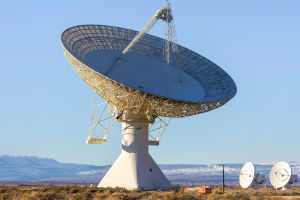In the vast expanse of the universe, astronomers continually discover celestial bodies that challenge our understanding of planetary science.
One such intriguing find is WASP-193b, a planet so extraordinary that it has earned the nickname "Marshmallow Planet."
This exoplanet's unusual characteristics provide a fascinating glimpse into the diversity of planetary systems and the mysteries that still abound in our quest to understand the cosmos.
Discovery and Basic Characteristics
WASP-193b was discovered by the Wide Angle Search for Planets (WASP) project, a ground-based initiative dedicated to detecting exoplanets via the transit method. This method involves observing the dimming of a star's light as a planet passes in front of it. The transit data for WASP-193b revealed a planet with a radius nearly 1.5 times that of Jupiter but a mass less than half, resulting in an extraordinarily low density. This exceptionally low density is what earned WASP-193b its whimsical nickname, as its overall composition appears to be as fluffy as a marshmallow.
Atmosphere and Composition
The most striking feature of WASP-193b is its extremely low density. With a density similar to that of styrofoam, WASP-193b is among the least dense planets ever discovered. This suggests that the planet is composed largely of hydrogen and helium with a small rocky core, surrounded by a thick, extended atmosphere. The low density indicates that this atmosphere is likely bloated, possibly due to intense heating from its parent star, WASP-193.
The planet orbits its star at a close distance, resulting in high levels of radiation and heat. This proximity to its star places WASP-193b in the category of "hot Jupiters," gas giants that orbit very close to their host stars. The intense heat causes the atmosphere to expand and become less dense, contributing to its marshmallow-like consistency.
Challenges in Understanding
The discovery of WASP-193b poses several challenges to existing models of planetary formation and structure. Traditional theories suggest that gas giants form at greater distances from their stars, where temperatures are low enough for volatile compounds to condense into solid cores that can attract massive gaseous envelopes. WASP-193b's current position, so close to its star, raises questions about whether it formed there or migrated inward after its formation.
Additionally, the stability of such a low-density planet in the harsh environment close to its star is puzzling. High levels of stellar radiation and strong stellar winds should, in theory, strip away the planet's atmosphere over time. Yet, WASP-193b maintains its bloated, fluffy state. Understanding how such a planet can exist and sustain its structure under these conditions is a significant focus of ongoing research.
Implications for Exoplanetary Science
The study of WASP-193b and similar exoplanets has broad implications for our understanding of planetary systems. These low-density planets challenge our conventional views of planet formation, migration, and atmospheric composition. By studying such unique worlds, astronomers can refine their models and theories, leading to a more comprehensive understanding of the diversity of planetary systems in our galaxy.
Furthermore, the peculiarities of WASP-193b underscore the importance of continued exoplanet exploration. Each new discovery adds to the growing body of knowledge, revealing the vast array of planetary types that exist beyond our solar system. These findings not only enrich our understanding of the cosmos but also have the potential to inform the search for habitable planets and the conditions necessary for life.
WASP-193b, the "Marshmallow Planet," stands as a testament to the unexpected and wondrous nature of the universe. Its low density and close proximity to its star challenge existing theories and open new avenues for research. As astronomers continue to explore the heavens, planets like WASP-193b remind us of the complexity and diversity of the cosmos, encouraging us to push the boundaries of our knowledge and understanding. The mystery of Marshmallow Planet is far from solved, but each discovery brings us one step closer to unraveling the secrets of the universe.

